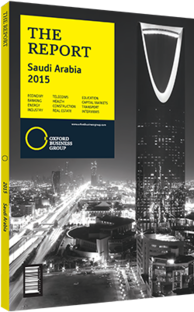Fahad Al Mubarak, Governor, Saudi Arabian Monetary Agency (SAMA): Interview

Interview: Fahad Al Mubarak
What have the Saudi authorities done to deepen the local financial sector in recent years?
Al Mubarak: The authorities have recently taken a number of steps to strengthen the non-bank segment of the financial system, scale up resource mobilisation and increase financial inclusion. For instance, they have allowed the establishment of non-bank financial firms to promote real estate and leasing activities in Saudi Arabia. SAMA is mandated to license and supervise the finance companies operating in Saudi Arabia, which, as of mid-December 2014, numbered 29.
Meanwhile, the Capital Market Authority (CMA) has announced the potential opening up of the Saudi capital market to qualified foreign institutional investors sometime in 2015, in order to broaden the investor base and strengthen the secondary market. Efforts are also under way to facilitate debt issuance and settlement procedures to promote the corporate bonds and sukuks market. The Saudi financial sector has continued to expand in recent years. For instance, the Saudi stock market remained on a high growth trajectory as total market capitalisation recorded a compound annual growth rate (CAGR) of 10% during 2009-13, to $467.5bn. The number of listed companies rose from 135 to 163 during the same period. Similarly, Saudi banks’ assets showed a CAGR of 8.4% over 2009-13, largely on account of enhanced deposit and credit flows. The bank credit to non-oil GDP ratio remained largely above the 70% mark during 2009-13. However, bank credit relative to total GDP stood at 40.1% in 2013.
How resilient is the Saudi economy to adverse developments, particularly the sharp decline in oil prices?
Al Mubarak: The Saudi economy has performed well in recent years with real GDP growth averaging 5.5%. The key contribution came from the non-oil sector, which on average expanded by 6.8% per year, compared to oil sector growth of 1.6 %. The total real GDP growth has a lot to do with the continuation of public spending, especially on health and education, and large investments in housing and infrastructure projects. This eventually resulted in an increased supply of banks’ loan-able funds, which were largely channelled into the private sector. While the annual growth of total public spending averaged 13.1% during 2009-13, total public expenditure on capital projects grew annually by 14.8% in the same period to $83.2bn.
The increase in oil prices over the past few years contributed to the Saudi economy in two important ways. First, it led to sustained current account surpluses and the accumulation of foreign exchange reserves. Second, high oil prices strengthened public finances, and enabled the government to reduce its debt-to-GDP ratio to 1.6% in 2014 from around 97% in 2002. Thus, the Saudi economy is strong enough to counter the adverse effects of declining oil prices in the short to medium term. The government budget for 2015 has already envisaged a record projected spending of $229.3bn, with 51.2% of this allocated to health, education and infrastructure development.
How is SAMA promoting the growth of small and medium-sized enterprises (SMEs) in the Kingdom?
Al Mubarak: SMEs play a vital role in accelerating economic activities and generating employment opportunities. To this end, SAMA has taken steps to promote and facilitate SMEs’ access to financing. For instance, SAMA spearheaded the establishment of the Saudi Credit Bureau (SIMAH), which has operated under SAMA supervision since 2004. Banks are currently in a better position to manage their SME credit risk, as SIMAH and the existence of the Kafalah loan-guarantee programme administered by the Saudi Industrial Development Fund enable them to access the credit history of prospective borrowers. On SAMA's directive, banks have also established dedicated SME units to facilitate SME-related operations. However, it goes without saying that there is a lot that still needs to be done to promote SMEs in Saudi Arabia, as total credit to the segment only constitutes around 2% of total banking sector lending.
You have reached the limit of premium articles you can view for free.
Choose from the options below to purchase print or digital editions of our Reports. You can also purchase a website subscription giving you unlimited access to all of our Reports online for 12 months.
If you have already purchased this Report or have a website subscription, please login to continue.

